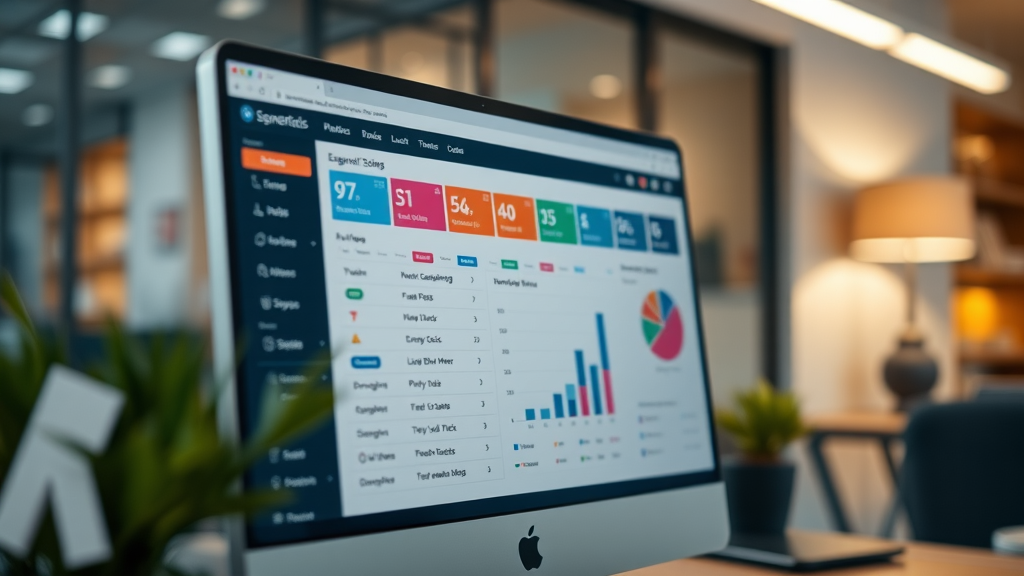In a digital landscape overflowing with information, capturing your audience’s attention feels like a Herculean task. Yet, mastering the art of segmenting audiences through blog content is your secret weapon. By tailoring your message to resonate with distinct groups, you not only enhance engagement but also foster loyalty and drive conversions. Ready to transform your blogging strategy? Dive into our guide, and discover how this crucial skill can elevate your content to new heights while connecting you with the right readers!
Understanding Audience Segmentation
What is Audience Segmentation?
Audience segmentation is the process of dividing your audience into smaller, manageable groups based on shared characteristics, behaviors, or interests. This targeted approach allows marketers to craft personalized content that speaks directly to different audience segments.
Table: Key Elements of Audience Segmentation
| Segment Type | Description | Example |
|---|---|---|
| Demographic | Based on age, gender, income, etc. | Targeting millennials |
| Behavioral | Based on user behavior and interaction | Frequent buyers vs. one-time customers |
| Psychographic | Based on personality, values, and lifestyle | Eco-conscious consumers |
Benefits of Audience Segmentation
- Enhanced Engagement: Tailored messages resonate better with specific groups.
- Increased Conversion Rates: Targeted campaigns lead to higher conversion rates.
- Better Customer Insights: Understanding your audience allows for more effective marketing strategies.
“The key to effective marketing is understanding your audience and tailoring your message accordingly.”
The Role of Blog Content in Audience Segmentation
Creating Targeted Blog Content
When segmenting audiences through blog content, it’s essential to create blog posts that cater to the specific needs and interests of each segment. This means understanding what each audience group cares about and delivering content that addresses their pain points.
Using Blog Content to Gather Data
Blog content is not just for information dissemination; it also serves as a valuable tool for gathering data. By analyzing which blog posts attract specific audience segments, you can refine your content strategy to better serve their needs.
Bullet Points: Data Gathering Techniques
- Use analytics tools to track page views and engagement metrics.
- Encourage feedback through comments or surveys.
- Monitor social media shares to gauge interest.
Tracking Key Metrics with Blog Content
Monitoring the performance of your blog posts is crucial in understanding how well you are segmenting your audience. Key metrics include:
- Traffic Sources: Identify where your audience is coming from.
- Bounce Rate: High bounce rates may indicate content misalignment.
- Engagement Rates: Monitor comments, shares, and likes on your blogs.

Effective Strategies for Segmenting Audiences Through Blog Content
Identifying Key Factors for Segmentation
To effectively segment your audience, focus on key factors such as:
- Demographics: Age, gender, location, income level.
- Behavioral Data: Purchase history, website interactions.
- Interests and Preferences: Hobbies, values, and lifestyle choices.
Leveraging Customer Data for Better Targeting
Utilizing customer data is essential for effective audience segmentation. By analyzing past interactions, preferences, and behaviors, you can tailor your blog content to meet the unique needs of your audience segments.
“Data-driven marketing creates a more personalized experience for the customer, leading to stronger relationships.”
Types of Audience Segmentation
Demographic Segmentation
Demographic segmentation focuses on characteristics such as age, gender, and income. This type of segmentation enables marketers to target specific groups effectively.
Example:
- Young adults may enjoy lifestyle blogs, while older adults may seek financial advice.
Behavioral Segmentation
Behavioral segmentation categorizes audiences based on their interactions with your brand. This includes their purchasing habits and online behavior.
Table: Examples of Behavioral Segmentation
| Behavior Type | Description | Targeted Content Example |
|---|---|---|
| Purchase History | Frequent vs. infrequent buyers | Loyalty programs vs. first-time buyer guides |
| Site Interaction | High engagement vs. low engagement | In-depth articles vs. quick tips |
Psychographic Segmentation
Psychographic segmentation dives deeper into the values, interests, and lifestyles of your audience. By understanding these elements, you can create content that resonates on an emotional level.
Bullet Points: Key Factors in Psychographic Segmentation
- Lifestyle choices
- Personal values
- Hobbies and interests

How Blog Content Can Increase Engagement
Building Trust Through Valuable Content
By providing valuable and informative content, you build trust with your audience. Trust leads to loyalty, and loyal customers are more likely to engage with your brand repeatedly.
Creating Content That Resonates
Effective content speaks directly to your audience’s needs. This means understanding their pain points and crafting blog posts that offer solutions.
Bullet Points: Tips for Creating Resonating Content
- Use relatable language.
- Address common challenges faced by your audience.
- Share success stories and testimonials.

Using Analytics Tools to Enhance Segmentation
Monitoring User Behavior
Utilizing analytics tools is vital in monitoring user behavior. Tools like Google Analytics can help you track how different audience segments interact with your blog content.
Adapting Content Based on Insights
Once you have gathered insights from your analytics, it’s essential to adapt your content strategy accordingly. This may involve creating new blog posts or adjusting existing ones to better meet your audience’s needs.
Email Marketing and Audience Segmentation
Building an Email List Through Blog Content
One of the most effective ways to segment your audience is through email marketing. By encouraging blog readers to subscribe, you can gather valuable data about their interests and preferences.
Automated Email Sequences for Targeted Content
Creating automated email sequences allows you to deliver targeted content based on the specific interests of your subscribers. This ensures that your audience receives content that is most relevant to them.
“Email segmentation can significantly improve your open and click-through rates, leading to more successful marketing campaigns.”
Case Studies of Successful Audience Segmentation
Real-World Examples
Several brands have successfully implemented audience segmentation strategies to enhance engagement and conversions. For example, a leading e-commerce platform tailored its email marketing campaigns based on customer purchase history, resulting in a 25% increase in conversions.
Key Takeaways from Case Studies
- Tailored content increases engagement.
- Understanding customer behavior is crucial.
- Using analytics can refine audience segmentation strategies.

Conclusion
In conclusion, segmenting audiences through blog content is an essential strategy for enhancing engagement and driving conversions. By understanding your audience’s needs and preferences, you can create targeted content that resonates with them, builds trust, and fosters loyalty.
Key Takeaways:
- Audience segmentation allows for more personalized content.
- Blog content is a powerful tool for gathering data.
- Analytics tools can enhance segmentation strategies.
- Email marketing can be effectively segmented to improve engagement.
Need help with segmenting audiences through blog content? Contact Absolute Local at 0408-945-048 or schedule a Free 15-minute pro positioning session here.
FAQs
-
What is audience segmentation?
- Audience segmentation is the process of dividing your audience into smaller groups based on shared characteristics to tailor your marketing efforts effectively. -
How can blog content help in audience segmentation?
- Blog content can gather valuable insights about your audience’s preferences and behaviors, allowing you to create targeted content that resonates with distinct groups. -
What tools can I use for audience segmentation?
- Analytics tools like Google Analytics and email marketing software can help you track user behavior and segment your audience for better targeting. -
Why is email marketing important for segmentation?
- Email marketing allows for direct communication with your audience and enables you to send tailored content based on their interests and behaviors.
 Add Row
Add Row  Add
Add 




Write A Comment